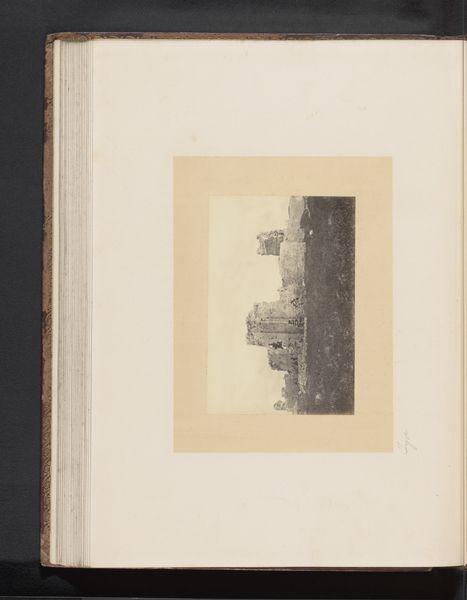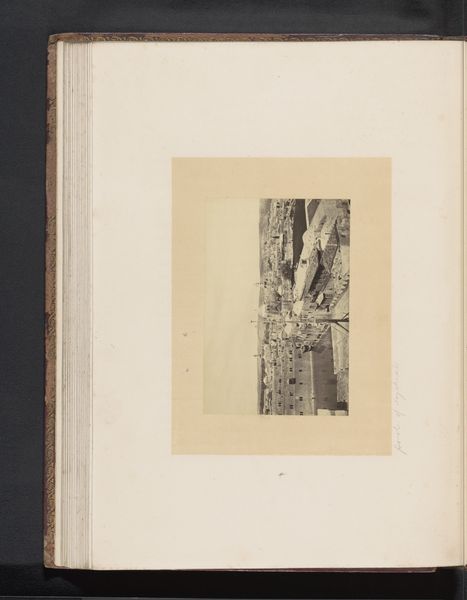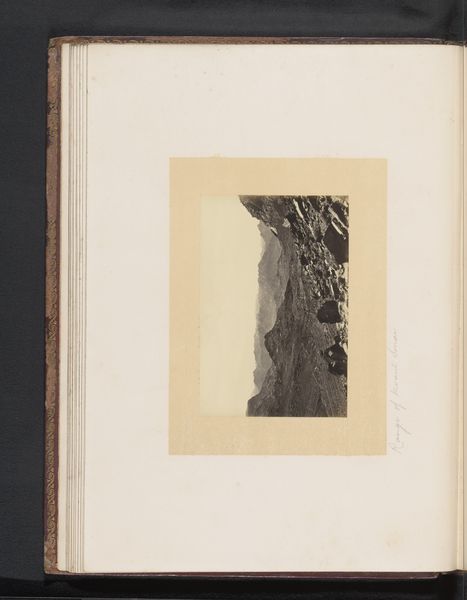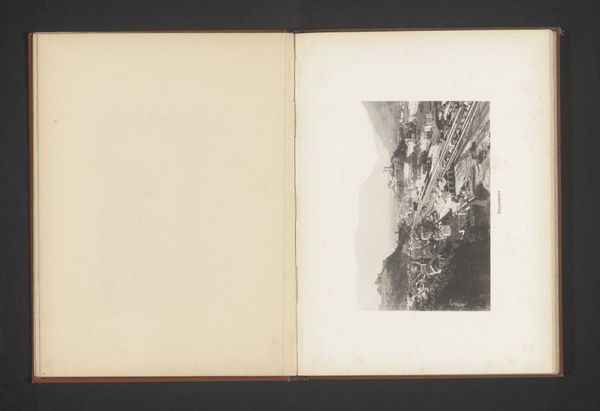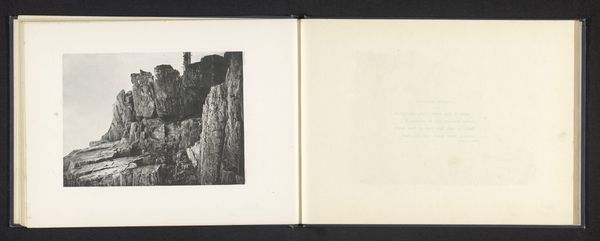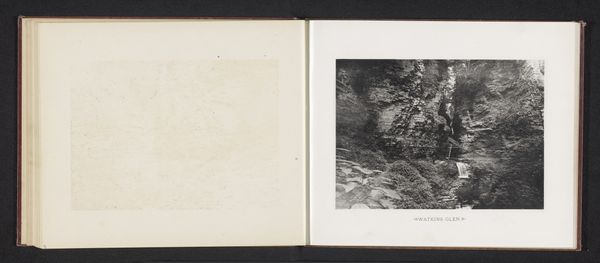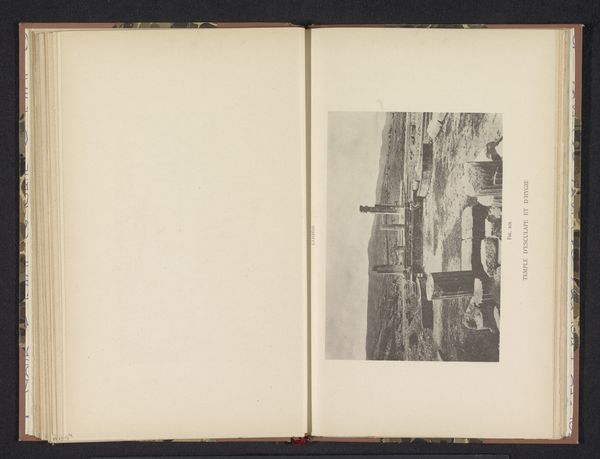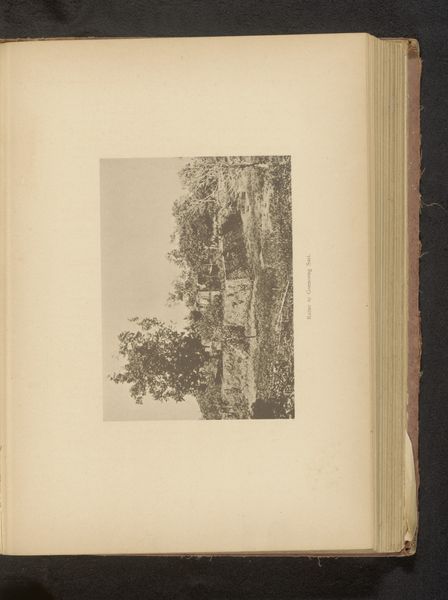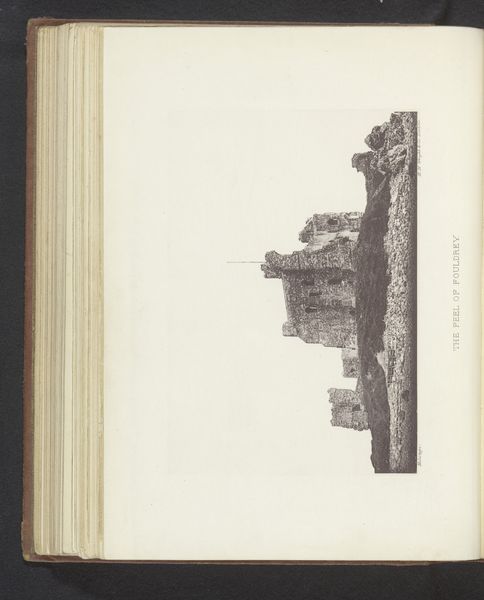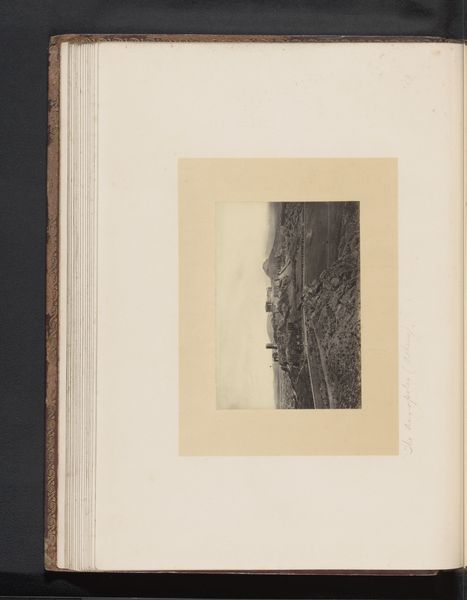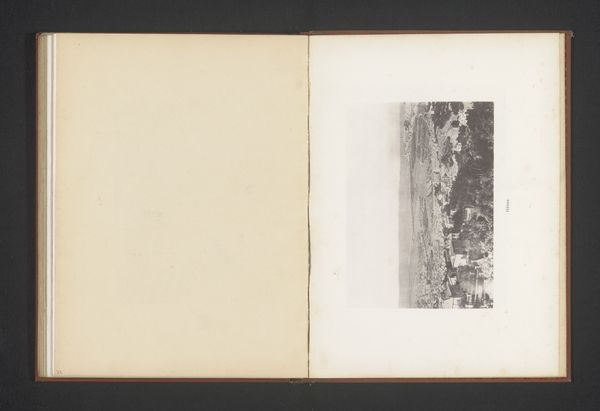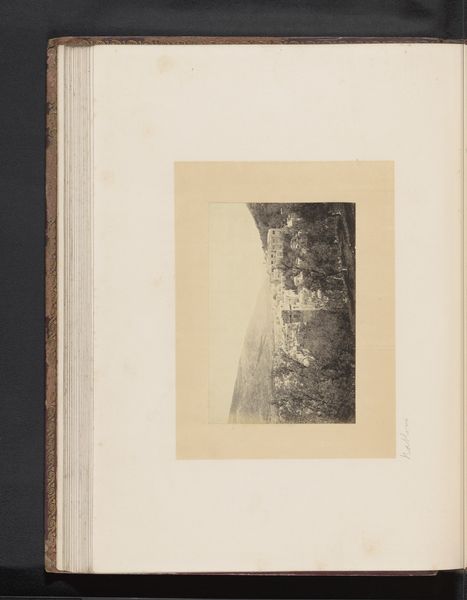
photography, albumen-print
#
aged paper
#
homemade paper
#
paper non-digital material
#
paperlike
#
sketch book
#
landscape
#
paper texture
#
photography
#
personal sketchbook
#
ancient-mediterranean
#
folded paper
#
orientalism
#
paper medium
#
design on paper
#
albumen-print
Dimensions: height 154 mm, width 104 mm
Copyright: Rijks Museum: Open Domain
Curator: This is Francis Frith's albumen print, "Gezicht op de Vijver van Siloam," taken before 1875 and now held at the Rijksmuseum. Editor: It has such a melancholic, still quality. The way the light captures the stonework...it feels timeless. Almost desolate. Curator: Frith was one of the pioneers of photography in the Middle East. This image, like many others from that era, provided Europeans with their first glimpse into these ancient biblical sites. Editor: It's striking how these photographs became visual documents shaping colonial understanding, and perhaps even justifying power dynamics with their vision of "otherness". Curator: The Pool of Siloam carries immense significance, featured in the Bible as a site of healing. Frith's lens imbues the landscape with that sense of history and spirituality. He seemed to chase not just images, but the stories embedded within them. Editor: But whose stories? I wonder about the unrecorded perspectives. Who were the local communities present, affected by these portrayals? How did they interpret this place before and after the arrival of the camera? We often view history through a Western lens, obscuring marginalized voices. Curator: I think you're right that this photograph also is significant not just as an objective record, but as a subjective interpretation. Frith chooses his angle, he manipulates the exposure. But its very presence helped establish a kind of cultural memory, a shared visualization, of what this location looked like at this moment. Editor: It speaks to the complicated legacy of photography in formerly colonized nations. Preserving history but also framing perspectives, even manufacturing them. I appreciate that tension we see here. Curator: Indeed. Looking at "Gezicht op de Vijver van Siloam", we observe both its surface representation and delve into its complex social, political, and cultural dimensions. Editor: Ultimately, by wrestling with those uncomfortable truths, we see this photograph not as a definitive statement, but a starting point for understanding the intersection of identity and visual representation.
Comments
No comments
Be the first to comment and join the conversation on the ultimate creative platform.
